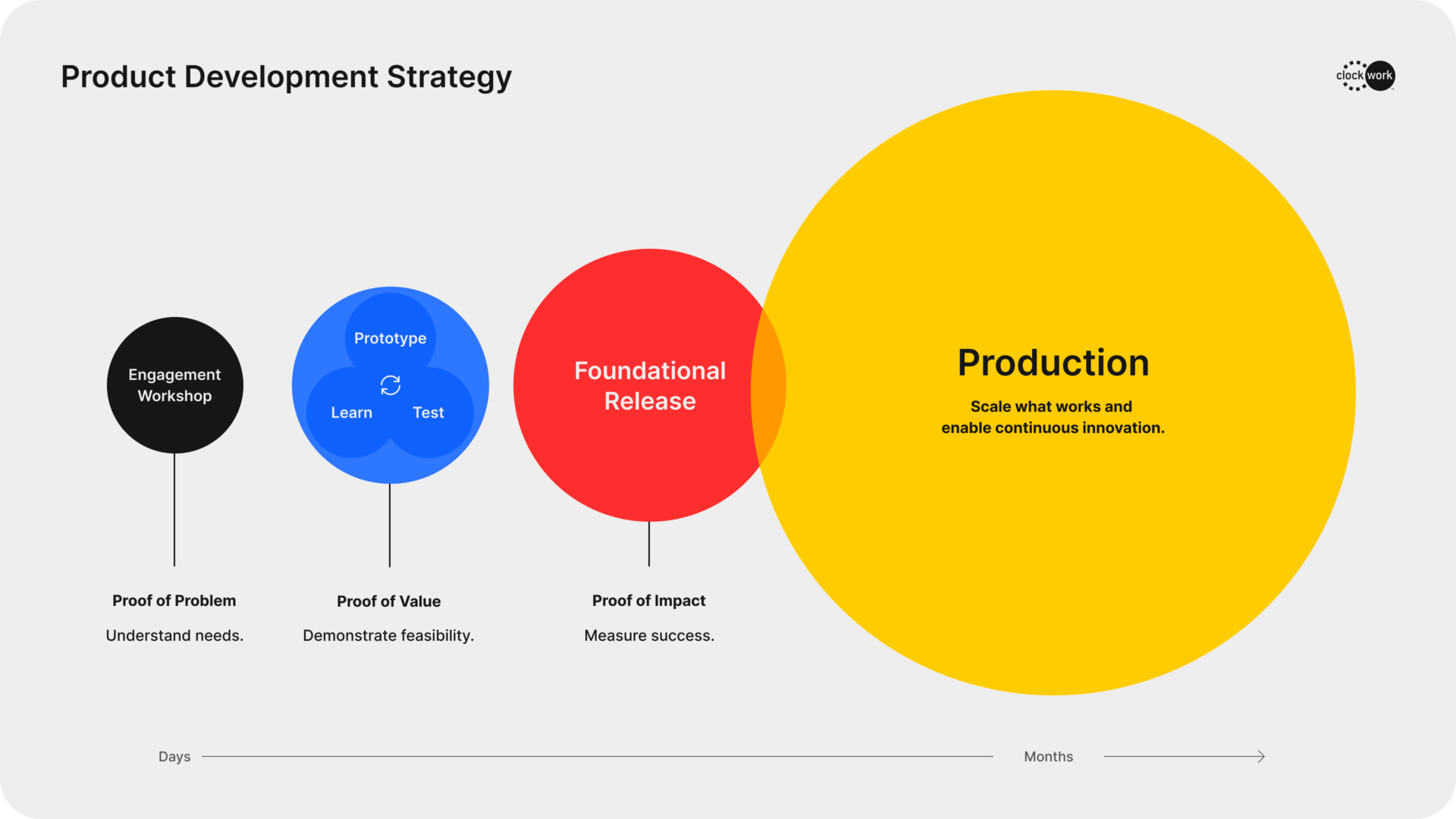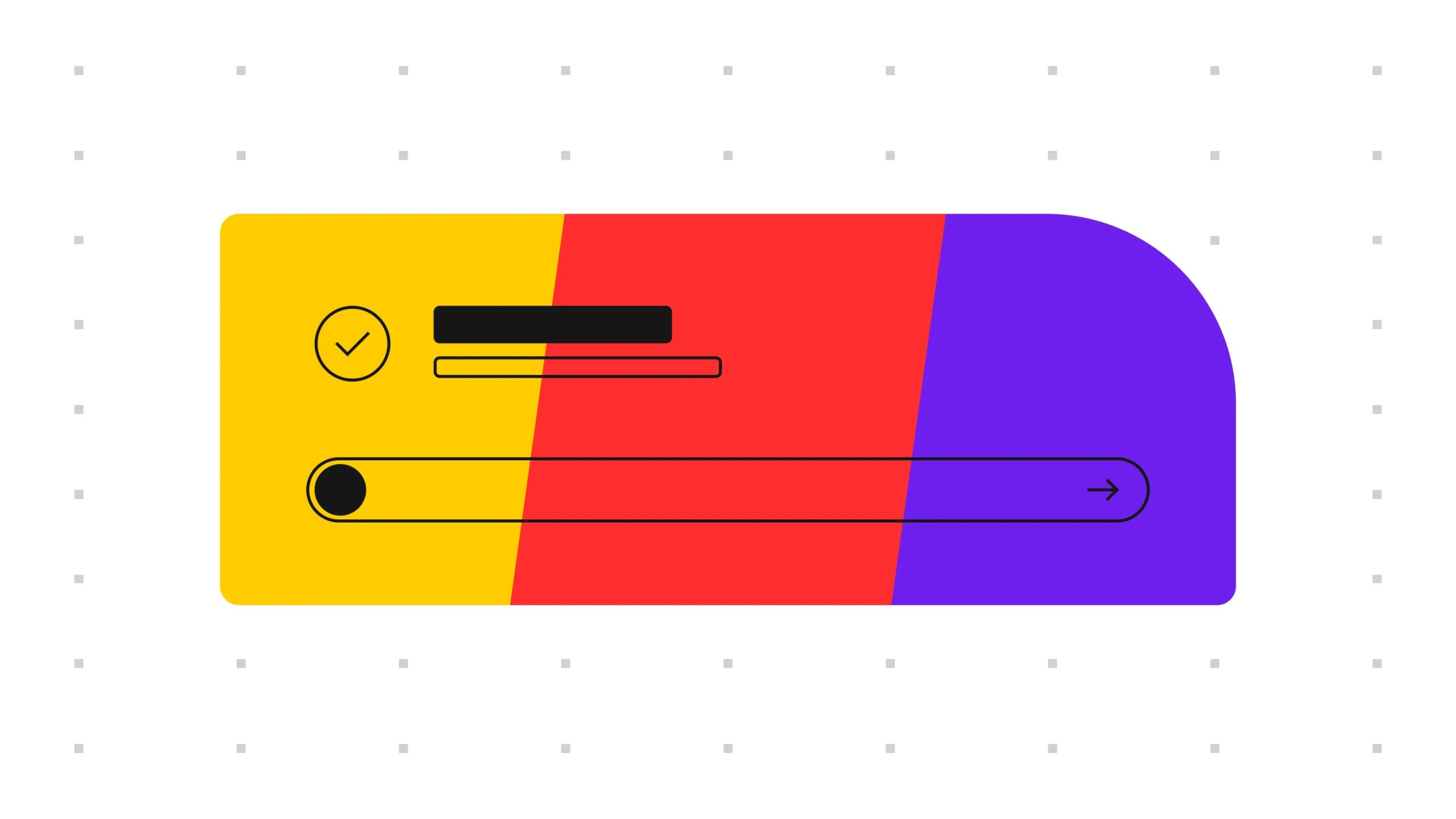Bad technology choices aren’t the reason most product modernization efforts fail. They don’t work because they try to do too much, too fast. When organizations rush to rebuild everything at once, it leads to overwhelm and false starts.
Phasing breaks this cycle. It transforms modernization from a risky, all-or-nothing bet into a series of validated steps, each building confidence and capability for the next.
Our four-phase framework for product modernization
The four-phase framework we use isn’t arbitrary; it mirrors how organizations actually make decisions and allocate resources. Each phase answers a specific question that leadership needs answered before committing to the next level of investment.
Phase 1:
Proof of Problem
- Clarity on what’s actually broken and why it matters
- Establish a shared understanding of the current state
→ Outcome: internal alignment and budget buy-in.
Phase 2:
Proof of Value
- Build a prototype to test the solution
- Validate direction, feasibility, and investment
- Identify potential issues early
→ Outcome: Alignment on a clear business case with defined success criteria.
Phase 3:
Proof of Impact
- Deliver a Minimum Marketable Product as the foundation for future scaling
- Focus on scalable foundation and adoption strategies to protect your investment
→ Outcome: Impact is seen quickly, and success metrics align with business objectives. The foundation is in place for future scaling.
Phase 4:
Implement and Scale
- Implement the digital product enterprise-wide with clear adoption strategies
- Establish a roadmap for feature rollouts, system integrations, and future evolutions
→ Outcome: The product is implemented across the business. Sustainable practices are in place to keep your product modern and scalable over time.
What makes this approach different
Traditional modernization starts with solutions
Vendors propose new platforms, architects design new systems, and teams start building, often before anyone has truly validated whether they’re solving the right problems.
Our approach starts with proof
Proof that the problem is real and worth solving. Proof that the proposed solution will deliver value. Proof that the implementation creates measurable impact. Only then do we scale.
This shift from assumption to validation changes everything:
- Stakeholders stay aligned because they’re part of validating each step
- Budgets get protected because you’re only funding what’s been proven
- Teams stay focused because priorities are clear and justified
- Risk decreases because issues surface early, when they’re cheap to fix
When to use each phase
Not every project needs all four phases. The framework adapts based on where you are and what you need:
- Already know the problem? Start with Phase 2 to validate your solution approach.
- Have executive buy-in but need to prove value? Phase 2 prototypes build the confidence to proceed.
- Ready to build but want to de-risk delivery? Phase 3 focuses on getting something real into users’ hands quickly.
- Scaling something that’s already working? Phase 4 helps you expand thoughtfully without breaking what’s successful.
The key is being honest about what you actually know versus what you’re assuming. That clarity creates stronger strategies, sharper decisions, and far fewer wasted resources.
Your next step
Modernization doesn’t have to be all or nothing. If you’re facing pressure to update legacy systems, trying to enable new capabilities like AI, or simply seeking to improve user experience, a phased approach will empower you to move forward with confidence.
It starts with a single question: What do we need to prove before we invest more? And if that question isn’t clear yet, don’t worry. That’s precisely what Phase 1 is designed to uncover.
Ready to explore how phased modernization could work for your organization? Get in touch to discuss your specific situation.
More product modernization resources
- Modernizing B2B Products: A Smarter Path to Impact → Understand the strategic decisions that shape successful B2B modernization.
- The New Rules of Modernization: Why 2025 is Different → Discover what’s changed in the modernization landscape and how to adapt; this article also explores why honest assessment matters more in 2025 than ever before.




